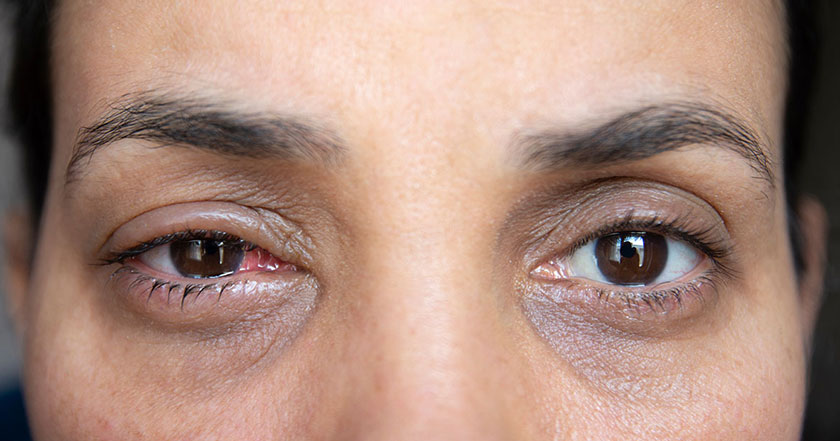
Pink eye (also known as conjunctivitis) and styes can both be a pain in the…eye.
But how can you tell which is which? Redness, pain, and irritation are symptoms of both.
Set your sights on feeling better! Read on to learn the differences between pink eye and styes, and we’ll point you in the right direction for proper treatment.
To help you see what’s going on behind the irritation, here are some more specific symptoms of pink eye vs. styes that may help clear up the differences between the two.
Styes occur when an oil gland or eyelash follicle becomes clogged and then infected, so hygiene is important when performing daily tasks like removing makeup or handling your contact lenses. People who have a skin condition called rosacea are also more prone to styes. This is because rosacea causes small, pus-filled bumps on the skin that, when close to the eye, can block the eyelid’s oil glands.
Pink eye occurs when the membrane that covers the eyeball becomes inflamed and irritated. This can stem from a viral or bacterial infection, or external irritants like allergens, chemicals, or foreign objects.
COVID 19 is an upper respiratory infection and, as mentioned before, most pink eye commonly occurs as part of an upper respiratory infection. So, it’s not surprising that pink is not uncommon with COVID 19 infections. If you have reason to suspect that you’ve contracted COVID-19, it’s still important to get tested to know for sure.
While they can certainly be an eyesore, styes are not contagious. Think of it like a pimple – someone else isn’t going to catch that from you.
Viral or bacterial pink eye, on the other hand, can be very contagious. It spreads from person to person through moisture from the infected eye. Hygiene plays a key role in preventing the spread of pink eye.
Here are some hygienic tips to help you and your children avoid getting pink eye and styes:
Treatments for each of these infections vary, which is why it’s so important to know the cause of your eye pain.
For styes, apply a warm compress and keep the eye clean. You should never try to pop a stye. This can lead to further irritation and open you up to the potential for a more serious infection. If a stye doesn’t go away within a week, gets worse in that time, or begins to impair your vision, seek medical assistance.
For pink eye, you can apply a sterile, cold compress to reduce inflammation and you should switch to glasses until your diagnosis is confirmed by a clinician and you are cleared to wear them again. Further treatment will be determined by the cause of your pink eye:
So keep a lookout! Take note of your symptoms to decipher the cause of your eye pain. Whether you have pink eye or a stye, visit your vybe urgent care for treatment and relief.
FIND YOUR VYBE